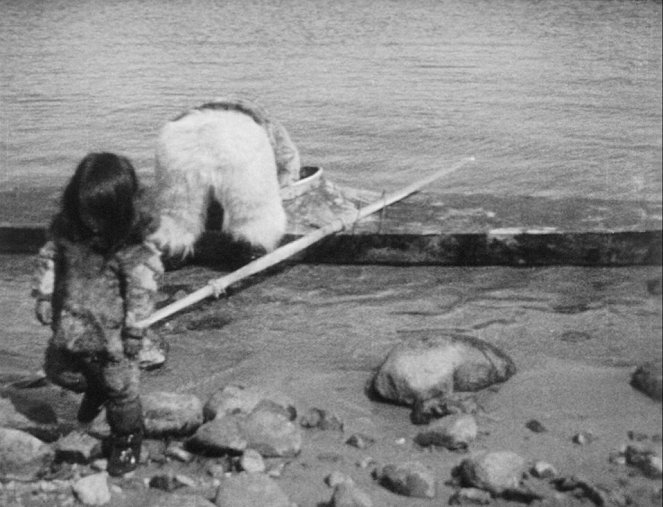Tartalmak(1)
Nanuk napbarnított arca csupa ránc. A szája szögletében összefutó ráncok erőteljessé, ugyanakkor szárazzá teszik nevetését. A közelképek után a végtelen jégtáblák totáljait látjuk. A kulturális antropológiai filmek úttörő darabjában bepillantást nyerhetünk a század eleji eszkimó kultúrába és életmódba. (Örökmozgó)
Recenziók (3)
Surprisingly, my favorite version of the film is the hybrid version with a spoken commentary or a commentary that reads the intertitles with reasonable intonation. The story of the Nanook family and their trials and tribulations was as valid then as it is now. The father takes care of the family, the family helps out here and there, and the experience from the technical progress can be fun. The most adorable thing is of course the construction of the new igloo, which includes a window made of worked ice. Meanwhile, the kids were sledding, and there is a little hut for the dogs. It's nice that the forefather of the modern documentary is such a nice film.
()
What I like about Nanook from the North is its unpretentious and unaffected humane dimension. The respect and good intentions with which Flaherty approached the project are very much evident, i.e. to understand the needs of Eskimo life and to present them in the most authentic form to the civilized world. It would have worked even better if the episodic action had been formed into a more coherent cinematic story, which wouldn't have been such a problem given the staged scenes, but even as a probe into another world framed by both basic animal motivations and the most transparent form of unadulterated humanity, this feature-length documentary still makes a full and timely impression nearly a century later.... 85%
()
One of the first documents ever created, "Nanook - the primitive man" has gained quite a few critics, mainly because the camera is not only a tool that records, but the man behind it also coordinates. It is partly staged because Flaherty simply wanted to have good shots. Considering that he burned his previous material, which took hours to make, he did not want to shoot something that would not be perfect for him. And in a way, it is perfect. At the time, it was interesting and sometimes raw, both in what we see and what we feel in the scenes, they can be imprinted in memory, but mainly, they can present the lives of those depicted here. You believe that they live like this, and you realize that you don't want to live like this. A strong documentary that will definitely surprise with the quality of the image even after more than 90 years.
()

